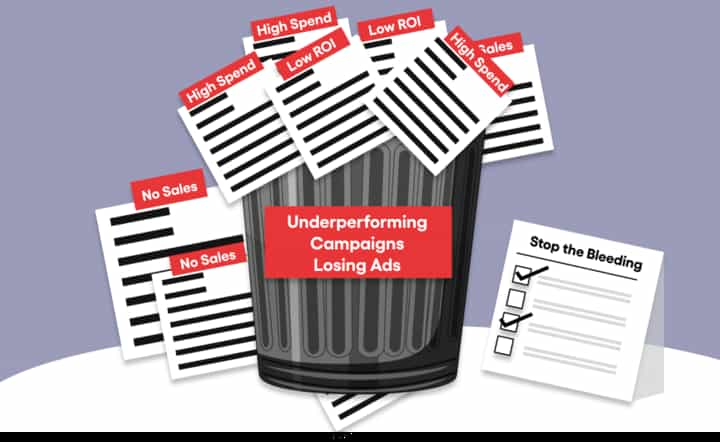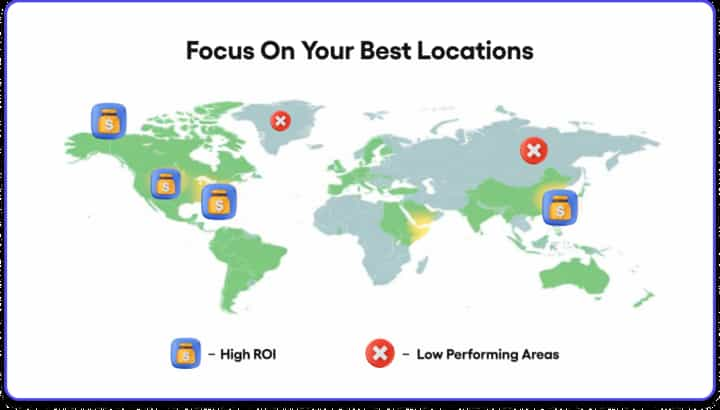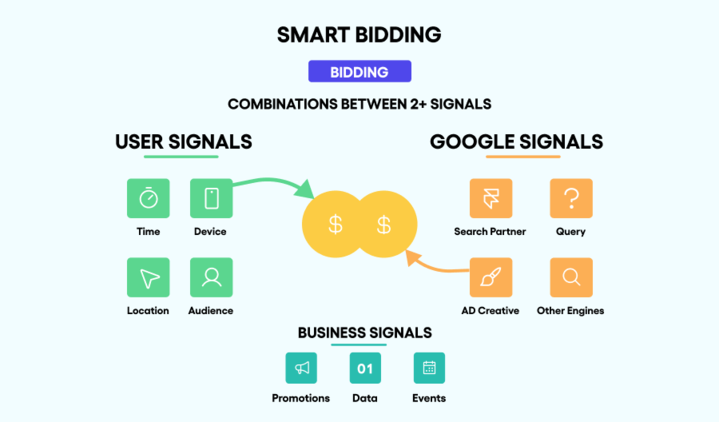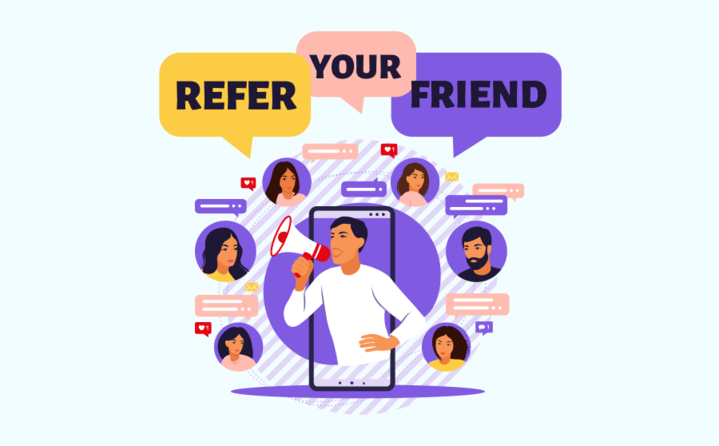Businesses often overspend, which makes it difficult to reduce customer acquisition cost.
Over the past decade, the cost of acquiring a customer has increased by 222%, with brands losing an average of $29 per new customer.
High CAC drains resources, limits expansion, and reduces the return on investment for marketing efforts. We understand the obstacles you face in optimizing your marketing spend while still driving customer growth.
That’s why we’ve put together this blog on 12 practical ways to lower your customer acquisition costs. Each strategy is backed by performance data and can be implemented immediately across your advertising campaigns.
Acquire and retain customers using WPLoyalty’s pre-built loyalty campaigns and multiple reward types.
The Importance of Customer Acquisition Cost (CAC) in Improving Profit Margins
Understanding and optimizing your CAC is essential for improving your profit margins for several reasons:
Direct Impact on Profit Margins:
- Profit Margin Formula: Profit Margin = (Revenue – Costs) / Revenue.
- A high CAC increases your total costs, which directly reduces your profit margins. By lowering CAC, you decrease costs, thereby increasing the profit retained from each sale.
Efficient Resource Allocation:
- Monitoring CAC helps you identify the most cost-effective marketing channels and strategies.
- You can allocate more resources to high-performing channels and reduce spending on underperforming ones, maximizing return on investment (ROI).
Better Customer Lifetime Value (CLV) Alignment:
- Comparing CAC with CLV ensures you’re not spending more to acquire a customer than the revenue they bring over their lifetime.
- Optimizing this ratio improves profitability by focusing on customers who contribute more to your bottom line.
Scalability and Growth:
- A lower CAC means you can acquire more customers with the same budget.
- This scalability leads to increased sales volume without proportionally increasing costs, boosting overall profit margins.
Cash Flow Improvement:
- Reducing CAC improves cash flow by decreasing the upfront costs needed to generate sales.
- Better cash flow enables reinvestment in the business, further driving growth and profitability.
Risk Mitigation:
High CAC can be risky, especially if market conditions change (e.g., increased advertising costs).
Keeping CAC low minimizes financial risk and stabilizes profit margins.
Example:
Imagine you run an e-commerce store:
- Scenario 1:
- CAC: $50 per customer.
- Average Revenue per Customer: $100.
- Profit Margin: (100 – 50) / 100 = 50%.
- Scenario 2 (After optimizing CAC):
- CAC: $30 per customer.
- Average Revenue per Customer remains $100.
- New Profit Margin: (100 – 30) / 100 = 70%.
By reducing cost per acquisition from $50 to $30, your profit margin increases from 50% to 70%, significantly improving profitability.
How to Reduce Customer Acquisition Costs
Here are the easy ways to reduce the cost of customer acquisition:
- Stop Running Ads in Dead Hours
- Increase Your Quality Scores Fast
- Double Down on Remarketing Lists
- Kill All Losing Google Ads Campaigns
- Target Only Your Best Location
- Set Up Smart Retargeting Funnels
- Use Smaller Test Budgets
- Focus on Existing Customer Sales
- Run Only Proven Ad Copies
- Set Smart Bidding Limits
- Enhance Customer Retention Efforts
- Get More Customers Through Referrals
1. Stop Running Ads in Dead Hours
Cut unnecessary ad spend by halting ads during times when your target audience is least active. Most businesses see minimal engagement during late-night hours, typically between 1 AM and 5 AM. The most effective hours to run your ads are often between 8 AM to 10 PM.
Here is the visual representation of optimal ad scheduling, showing dead hours (1 AM to 5 AM) in muted colors and peak active hours in vibrant green.

How to Implement:
- Analyze Hourly Performance Data:
- Access your advertising platform (e.g., Google Ads, Facebook Ads).
- Pull reports that show performance metrics (impressions, clicks, conversions, cost) segmented by each hour of the day.
- Look for patterns where ad spend is high but conversions are low or nonexistent.
- Identify Dead Zones:
- Determine the specific hours when your ads receive minimal engagement or conversions.
- Common dead zones are between 1 AM and 5 AM, but this can vary depending on your industry and audience behavior.
- Adjust Ad Scheduling:
- Use the ad scheduling or dayparting feature in your ad platform.
- Set your campaigns to run only during hours when your audience is active and conversions are likely.
- Exclude the identified dead hours to prevent your ads from showing during these times.
- Pause Ads on Low-Performing Days:
- Similarly, analyze performance by day of the week.
- If certain days consistently underperform, consider pausing ads on those days or reducing your bids.
2. Increase Your Quality Scores Fast
Quality Score is a metric used by platforms like Google Ads to evaluate the relevance and quality of your keywords, ads, and landing pages. A higher Quality Score leads to lower costs per click (CPC) and better ad positions.

How to Implement:
- Use Exact Keyword Matches in Your Headlines:
- Incorporate the exact keywords you’re targeting directly into your ad headlines and descriptions.
- This increases ad relevance, leading to a higher Quality Score.
- Align Your Landing Page with Ad Text:
- Ensure that the content on your landing page matches the promises made in your ad.
- If your ad mentions a specific product or offer, the landing page should prominently feature it.
- Keep Ad Groups Small (10-15 Keywords Max):
- Organize your campaigns into tightly themed ad groups with a limited number of closely related keywords.
- This allows for more targeted ad copy and better alignment with user search queries.
- Fix Low-Quality Score Ads Immediately:
- Regularly monitor your quality scores.
- For ads or keywords with low scores (below 5/10), make necessary adjustments or consider pausing them.
3. Double Down on Remarketing Lists
Remarketing involves targeting ads to people who have previously visited your website or engaged with your content. These individuals are more familiar with your brand and are 6x more likely to convert compared to new and regular visitors.

How to Implement:
- Set Up Remarketing for All Website Visitors:
- Create a remarketing audience in your ad platform that includes everyone who has visited your website.
- Install the necessary tracking pixels or tags on your site to build this audience.
- Create Special Lists for Cart Abandoners:
- Segment users who added items to their cart but did not complete the purchase.
- Users who abandon carts have high purchase intent and are prime candidates for remarketing.
- Show Different Ads Based on Pages Visited:
- Tailor your ads to reflect the specific products or services a user viewed.
- Use dynamic remarketing to display the exact items they showed interest in.
- Increase Frequency for Recent Visitors:
- Adjust your ad settings to show ads more frequently to users who have visited your site within the last few days.
- Recent visitors are more likely to remember your brand and convert.
4. Kill All Losing Google Ads Campaigns
Continuing to invest in unprofitable campaigns drains your budget and increases your CAC. By pausing or stopping these campaigns, you can reallocate resources to better-performing strategies.

How to Implement:
- Identify Campaigns Exceeding 2x Target CAC:
- Review your campaigns and note those were the cost per acquisition is more than twice your target.
- High CAC indicates inefficiency and poor performance.
- Look for Campaigns with No Sales in 7 Days:
- If a campaign hasn’t generated any sales in a week despite spending, it’s a red flag.
- Consider pausing these campaigns to prevent further losses.
- Check High-Spend, Low-Conversion Keywords:
- Identify keywords that consume a lot of budget but result in few or no conversions.
- Pause or adjust bids on these keywords.
- Pause Non-Performing Campaigns:
- Stop campaigns that consistently underperform.
- Focus your efforts and budget on campaigns that meet or exceed your performance benchmarks.
5. Target Only Your Best Location
Not all geographic locations perform equally. Some areas may have higher conversion rates or lower customer acquisition costs. By focusing on top-performing regions, you maximize efficiency and reduce wasted spend.

How to Implement:
- Pull Reports by City/Region:
- Use your ad platform’s reporting tools to analyze performance metrics (clicks, conversions, CAC) by geographic location.
- Cut Bottom 20% Performing Locations:
- Identify locations with the lowest performance metrics.
- Exclude these areas from your targeting to prevent unnecessary ad spend.
- Double Down on Top-Converting Areas:
- Allocate more budget or increase bids in regions where you see high conversion rates and low CAC.
- Tailor your messaging to resonate with these specific audiences.
- Block High-Fraud Click Locations:
- Be aware of regions known for click fraud or non-genuine engagement.
- Exclude these locations to protect your ad budget.
6. Set Up Smart Retargeting Funnels
A retargeting funnel delivers specific messages to users based on their stage in the buying process and the time since their last interaction. This approach increases relevance and encourages conversions.

How to Implement:
- Segment Your Audience by Time Since Last Visit:
- Create audience lists for different time frames (e.g., Days 1-3, Days 4-7, etc.).
- Use your ad platform’s audience management tools to set up these segments.
- Customize Messages for Each Stage:
- Days 1-3: Emphasize product benefits and features to reinforce interest.
- Days 4-7: Highlight customer reviews and testimonials to build trust.
- Days 8-14: Offer special discounts or promotions to incentivize purchase.
- Days 15+: Use urgency-driven messaging like “Last Chance” offers.
- Change Creatives Every 3 Days:
- Regularly update your ad visuals and copy to prevent ad fatigue.
- Fresh creatives keep your audience engaged and responsive.
- Monitor Performance and Adjust:
- Track the effectiveness of each stage in your funnel.
- Make data-driven adjustments to improve results.
7. Use Smaller Test Budgets
Testing new campaigns or strategies with small budgets minimizes risk. It allows you to evaluate effectiveness before investing significant resources.

How to Implement:
- Start New Campaigns at $10/Day:
- Limit your initial daily budget to control costs during the testing phase.
- This approach prevents overspending on unproven campaigns.
- Require 3 Sales Minimum Before Scaling:
- Set a benchmark for success (e.g., achieving three sales).
- Only increase the budget once the campaign meets this criterion.
- Use A/B Tests with Clear Success Metrics:
- Test one variable at a time (e.g., ad copy, audience targeting) to determine what affects performance.
- Define what constitutes success (e.g., lower CAC, higher conversion rate).
- Scale Winners Gradually (2x per Week Max):
- Increase the budget incrementally to avoid overwhelming the campaign.
- Doubling the budget no more than once per week allows for controlled growth.
8. Focus on Existing Customer Sales
Marketing to existing customers is more cost-effective than acquiring new ones. They are already familiar with your brand and are more likely to make repeat purchases.

How to Implement:
- Set Up Separate Campaigns for Past Buyers:
- Create targeted ads that speak directly to previous customers.
- Highlight new products, upgrades, or complementary items.
- Use Customer Match Audiences:
- Upload your customer email lists to ad platforms like Google Ads or Facebook Ads.
- Target these users with personalized ads.
- Create Lookalike Audiences from Buyers:
- Use your customer data to find new audiences with similar characteristics.
- This expands your reach to high-potential prospects.
- Offer Exclusive Deals to Previous Customers:
- Provide special discounts, early access, or loyalty points and rewards.
- Incentivize repeat purchases and enhance customer loyalty.
9. Run Only Proven Ad Copies
Using ad copies that have demonstrated success ensures better performance. Eliminating underperforming ads improves overall campaign efficiency.

How to Implement:
- Kill Ads Below 1% CTR Immediately:
- Monitor your ads’ click-through rates.
- Pause or revise ads with CTRs under 1%, as they are not engaging users effectively.
- Use Only Top 3 Performing Headlines:
- Identify headlines with the highest engagement and conversions.
- Focus on these proven headlines in your campaigns.
- Remove Ads Without Conversions After 100 Clicks:
- If an ad hasn’t generated any conversions after 100 clicks, it’s likely not effective.
- Pause these ads to prevent further wasted spend.
- Test New Copies with Small Budgets:
- Introduce new ad variations cautiously.
- Allocate a small portion of your budget to test their performance.
10. Set Smart Bidding Limits
Controlling your bids ensures you don’t overspend on clicks that may not convert. Smart bidding strategies help maintain profitability.

How to Implement:
- Set Maximum CPC Limits:
- Determine the highest amount you’re willing to pay per click based on your target CAC and profit margins.
- Adjust your bids accordingly to prevent exceeding this limit.
- Use Automated Rules for Daily Budgets:
- Configure your ad platform to automatically adjust bids or pause campaigns when certain thresholds are met.
- For example, pause a campaign if the daily spend reaches a set amount.
- Stop Campaigns That Exceed Target CAC:
- Monitor your campaigns’ cost per acquisition.
- Pause or adjust campaigns that consistently exceed your acceptable CAC.
- Monitor Mobile vs. Desktop Performance:
- Analyze how your ads perform on different devices.
- If mobile traffic has a higher CAC, consider reducing bids or excluding mobile devices.
11. Enhance Customer Retention Efforts
Focusing on retaining existing customers is a highly effective way to get CAC down. Keeping customers loyal reduces the need to acquire new ones constantly. Loyal customers also tend to spend more over time and can become brand advocates.

How to Implement:
- Set Up Loyalty Programs:
- Create Reward Systems: Offer reward points, discounts, or exclusive deals to encourage repeat purchases.
- Recognize Milestones: Acknowledge customer anniversaries or birthdays with special offers.
- Personalize Customer Interactions:
- Use Customer Data: Use purchase history and browsing behavior to curate recommendations and offers.
- Segment Your Audience: Group customers based on preferences or behaviors for targeted marketing.
- Improve Customer Service:
- Provide Exceptional Support: Offer multi-channel support (email, phone, live chat) to address customer inquiries promptly.
- Train Staff Thoroughly: Ensure all customer-facing employees are knowledgeable and equipped to solve problems efficiently.
- Solicit and Act on Feedback:
- Conduct Surveys: Regularly ask for customer input to identify areas for improvement.
- Implement Changes: Show customers that their feedback leads to tangible improvements.
12. Get More Customers Through Referrals
Implementing a referral program helps you acquire new customers through recommendations from your existing ones, which can significantly lower your acquisition costs. Since your current customers share your business with people they know, you reduce spending on traditional advertising and outreach.

How to Implement:
- Establish a Referral Program:
- Offer Incentives: Provide rewards such as discounts, freebies, or account credits to both the referrer and the new customer.
- Set Clear Terms: Make sure the referral campaign’s process is straightforward and easy to understand.
- Promote the Program Actively:
- Use Multiple Channels: Advertise your referral program via email campaigns, social media, and on your website.
- Highlight Benefits: Emphasize the mutual rewards for both parties involved.
- Simplify the Referral Process:
- Provide Sharing Tools: Include shareable links or social media buttons to make referring effortless.
- Automate Tracking: Use software to track referrals and automate reward distribution.
- Recognize and Appreciate Referrers:
- Public Acknowledgment: Feature top referrers in newsletters or on social media.
- Exclusive Perks: Offer special privileges or access to referrers as a token of appreciation.
Get started with WPLoyalty’s referral campaigns and reward both referrer and referee with points or discounts.
Conclusion
Reducing your customer acquisition cost isn’t just about saving money – it’s about building a more profitable and sustainable business. The 12 methods we’ve covered aren’t theoretical concepts; they’re battle-tested tactics that work immediately.
Remember: Even implementing just 2-3 of these methods can significantly impact your bottom line. Start with the easiest wins: check your campaign hours, set up basic retargeting, and remove obvious waste in geographic targeting. These alone can cut your CAC by 20-30% in the first month.
The key is to take action now. Don’t try to implement everything at once. Pick the three methods that seem most relevant to your business and implement them this week. Track your results for 30 days, then add more optimizations as you go.
Your Next Steps:
- Audit your current CAC across all channels
- Choose your top 3 methods from this list
- Implement them within the next 7 days
- Track your savings for 30 days
Frequently Asked Questions
Yes, CAC is a critical KPI that directly impacts profitability. Track it daily alongside Customer Lifetime Value (CLV). Good rule: Your CLV should be at least 3x your CAC for sustainable growth.
Cut off ads between 1 AM – 5 AM, remove zero-conversion keywords immediately, double down on retargeting past visitors, and stop running ads in bottom-performing cities. These four actions alone typically reduce CAC by 30-40% within 30 days.
SaaS: Keep CAC below 33% of customer lifetime value. eCommerce: Stay under 30% of first order value. B2B: Aim for CAC payback within 12 months. Benchmark against your industry averages and past performance.
Start with quick wins: pause non-converting ad campaigns, target only high-performing locations, run retargeting campaigns to past visitors, and focus on existing customer sales. These tactics can reduce CAC by 40% in the first month.
Rising ad costs, increased competition, and poor campaign optimization drive up CAC. Fix this by cutting wasteful ad spend, focusing on retargeting warm audiences, and improving conversion rates through better targeting and ad copy.
